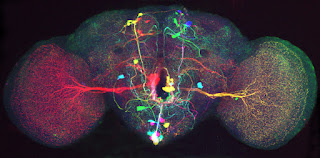 |
| God's Eye |
Much of space exploration now can be attributed to science-fiction novel and magazine influence, such as contributions fro Chesley Bonestell. These science-fiction fantasies help popularize space exploration and opened up possibilities that space travel could achieve. Popular media, from television to movies, also played a role into space exploration.
 |
| The Jetsons |
 |
| Orbital Debris Progression |
Whether it is for political statements or encouraging space-exploration, art has influenced space studies in a very progessive manner.
References
Bonestell, Chesley. "Bonestell - Home." Bonestell - Home. Bonestell LLC, 2016. Web. 29 May 2016. <http://www.bonestell.org/>
Clar, Richard. "Projects." Space Art at Art Technologies, a Collaboration between Space Technology and the Arts. Art Technologies, 2005. Web. 29 May 2016. <http://www.arttechnologies.com/site-2005/projects/dangerous.html>.
Ford, Kathleen. "Dancing on the Ceiling: Art & Zero Gravity Curated by Kathleen Forde : EMPAC Curtis R. Priem Experimental Media and Performing Arts Center : Troy, NY USA." Dancing on the Ceiling: Art & Zero Gravity Curated by Kathleen Forde : EMPAC Curtis R. Priem Experimental Media and Performing Arts Center : Troy, NY USA. RPI, 2010. Web. 29 May 2016. <http://zerogravity.empac.rpi.edu/>.
Woods, Arthur. "Cosmic Dancer - a Space Art Intervention by Arthur Woods." The Cosmic Dancer Project : Cosmic Dancer Introduction : Arthur Woods. Arthur Woods, 1993. Web. 29 May 2016. <http://www.cosmicdancer.com/cosmic_dancer_introduction.php>.
Uconlineprogram. "8 Space Intro 1280x720." YouTube. YouTube, 29 May 2013. Web. 29 May 2016. <https://www.youtube.com/watch?v=2dPAmpBiVHY>.







